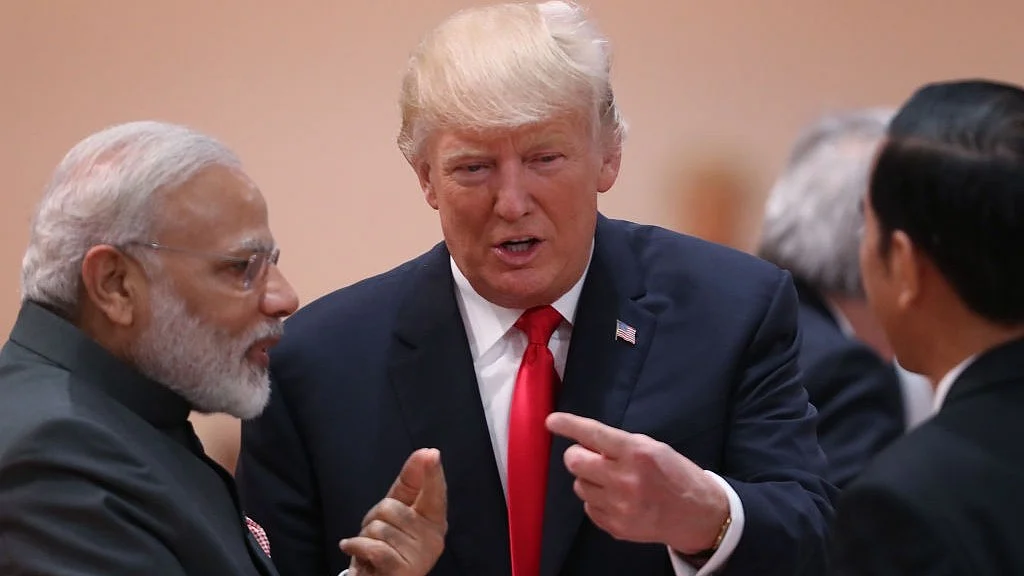Election-time Modinomics—reckless spending, rupee manipulation?
A fortnight ago, the US Treasury Department put India on the “watch list” of countries suspected of “currency manipulation”. Is the Narendra Modi government being reckless in election year?

Driven by election year desperation, is the Modi government playing ducks and drakes with the Indian economy by indulging in currency manipulation, reckless spending and fiscal indiscipline? The Trump Administration certainly seems to think so.
Just a fortnight ago, the US Treasury Department took the drastic step of putting India on the “watch list” of countries suspected of “currency manipulation”.
Now Trump Administration officials are expressing anxiety about what they call the ‘Rupee paradox’. On the one hand, the Reserve Bank of India is on a dollar-buying spree to artificially strengthen the value of the rupee; yet the value of the Indian currency continues to weaken steadily.
The rupee has lost nearly 5% of its value since January 2018, the lowest in the last 15 months. On Monday the dollar rate was ₹66.48 and market expectations are that it could cross the ₹68 mark before long.
US economists are keeping a close watch on other health parameters of the Indian economy. Treasury officials say they find the increased government spending ahead of elections “a bit worrying”.
They are aware that the election cycle has begun in India and this habitually triggers unwarranted government spending. But this should not lead to “fiscal indiscipline” which would inevitably widen the fiscal deficit and have both short-term and long-term adverse economic consequences.
They point to the sharp and unexpected slowdown in Britain’s economic growth, officially confirmed by the Bank of England last week. The pound sterling, which was among the best performing major currencies in 2018, has weakened suddenly. Till three weeks ago, the pound was up 6% against the dollar—now it is up less than 2% against the dollar.
Britain has its own problems but its travails have a lesson for other countries including India. On the fact of it, India’s foreign exchange reserves are at an all-time high of $424.8 billion (as of April first week). But it is precisely India’s ballooning dollar reserves that have aroused the suspicions of the Trump administration.
US economists are keeping a close watch on other health parameters of the Indian economy. Treasury officials say they find the increased government spending ahead of elections “a bit worrying”. They are aware that the election cycle has begun in India and this habitually triggers unwarranted government spending. But this should not lead to “fiscal indiscipline” which would inevitably widen the fiscal deficit and have both short-term and long-term adverse economic consequences
The US Treasury Department has three parameters to determine whether a country is indulging in currency manipulation: a) whether the country has a bilateral trade surplus with the US exceeding $20 billion; b) whether the current account surplus exceeds 3% of the country’s GDP; and c) whether net purchases of foreign currency exceed 2% of the country’s GDP over a year.
India has breached two of the three criteria: its trade surplus and forex purchases are higher than prescribed. The RBI’s net annual purchases of foreign exchange reached $56 billion in 2017, equivalent to 2.2% of GDP.
There are some other indicators of the state of the India’s economy that are pertinent. One is the clear trend that foreign investment in Indian equities and bonds has slowed down. In the last three months, foreign portfolio investments stood at ₹13,260 crore, a fifth of the figure at the same time last year, according to data from National Securities Depository Limited.
On the trade front, India’s import bill is rising at a time when the contribution of exports to the country’s GDP has hit a 14-year low. In other words, the trade deficit has widened to $156.8 billion for financial year 2017-18, compared to $105.72 billion in the previous year.
The recent rise in oil prices is bound to aggravate the current account deficit situation. In fact, economic analysts say the fall in the Indian rupee can be attributed to higher crude oil prices, widening trade deficit, and higher capital outflows.
With the government likely to be preoccupied with electioneering for most of the current year, and given the political and social turmoil the country is already experiencing, the economic outlook is not rosy, particularly if there is further reckless fiscal spending and greater outflow of foreign capital.
Follow us on: Facebook, Twitter, Google News, Instagram
Join our official telegram channel (@nationalherald) and stay updated with the latest headlines